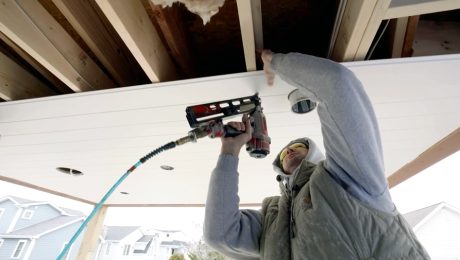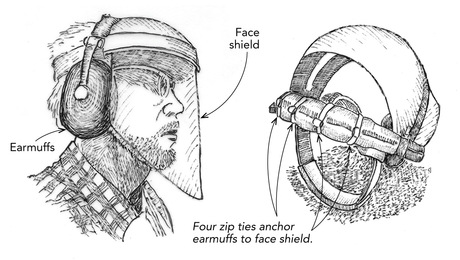Protecting Your Lungs on the Job
Know the risks, and if you can't eliminate them, choose the right respirator.

Synopsis: Airborne particles and vapors can pose serious health risks to the unprotected. This article describes the various types of dust masks and respirators on the market and discusses filters appropriate for dust, paint spray, fibers, and organic vapors. It includes a list of manufacturers.
A cabinetmaker friend of mine works out of his two-car garage in a residential part of town. The neighbors don’t exactly know that they have a full-time woodshop in their midst, so he keeps the big overhead door down while he’s working, and he wears a dust mask when the air gets clogged with particles. The last time I visited he was making a solid-surface countertop, and the polystyrene dust kicked up by the router hung in the shop like a thick plastic fog. He handed me a dust mask, and as I stretched its single rubber-band strap over my head, I spied a disclaimer printed in red ink on the facepiece. It said, “Warning. This mask will not protect your lungs. Misuse may result in sickness or death.”
I’m not sure why a company would make a dust mask that isn’t intended to safeguard the user’s lungs. But the notion of wearing one of these uncomfortable muzzles while remaining unprotected made me want to find out just what kind of mask does protect lungs. The first thing I found out is that before you can choose the right respirator, you need a basic understanding of what the likely airborne hazards are going to be on a job site and what happens if you don’t protect yourself.
The body’s defense
Most particles that get past your nose hairs are deposited in the air passages that lead to the lungs. The body then takes measures to remove them. For example, when particles settle on the bronchial walls, tiny hairs called cilia sweep the particles (in a coating of mucous) toward the exit, where they are coughed up encased in phlegm.
Respirable particles are small enough to get into the alveolar sacs, where carbon dioxide is expelled and oxygen taken into the bloodstream. There aren’t any cilia in these sacs. Instead, macrophage cells perform a similar duty. These custodial cells roam around the innermost reaches of the lungs, swallowing bacteria and then poisoning them. Macrophage cells can also swallow particles and then convey them back to the bronchioles, where the cilia take over.
Particle and fiber risks
People who work with wood face respiratory problems that range from runny noses to permanent lung damage. Because they work mostly outdoors, carpenters usually aren’t exposed to the dust concentrations experienced by woodworkers. But that changes when carpenters move indoors. Zander Brennen, a carpenter from Berkeley, California, found that out when he built a house that included a lot of kiln-dried redwood trim. He and his colleagues set up the table saw inside the house and ripped moldings for a couple of weeks. Unlike wet framing lumber, particles from dry wood hang in the air for a long time, so the house was filled with airborne dust. Brennen’s sporadic use of a dust mask didn’t keep him out of the emergency room, where he ended up one night because he was unable to breathe. The diagnosis: occupational asthma. Brennen’s bronchial tubes had become inflamed by the redwood dust, which caused mucous-secreting cells to go into overdrive, constricting the diameter of his air passages. Once sensitized in this manner, air passages overreact to any kind of dust. Brennen had to take bronchial dilation medicine for five years before his respiratory system returned to normal.
For more photos and details, click the View PDF button below:

























